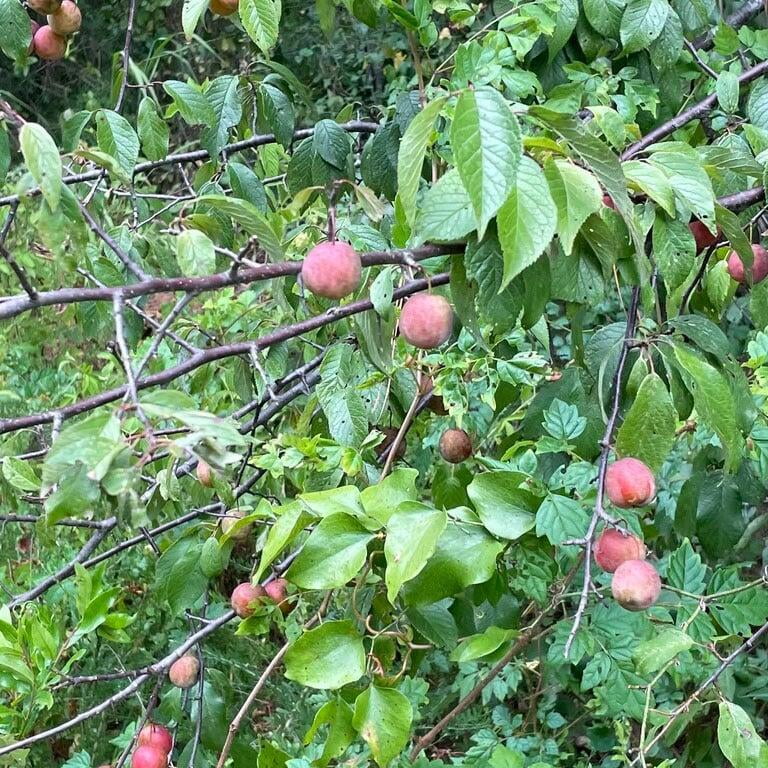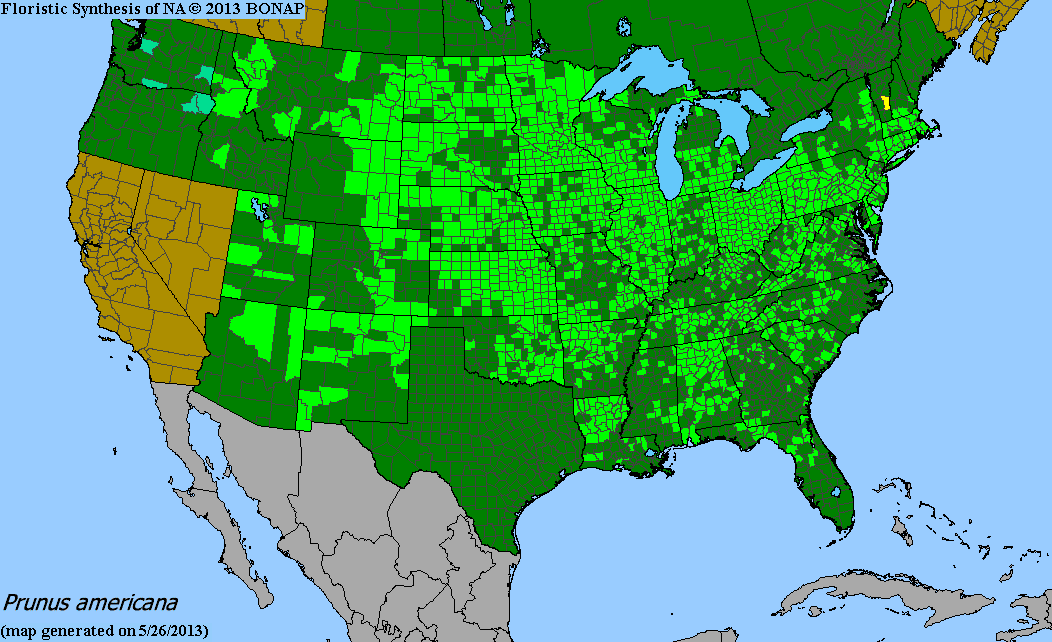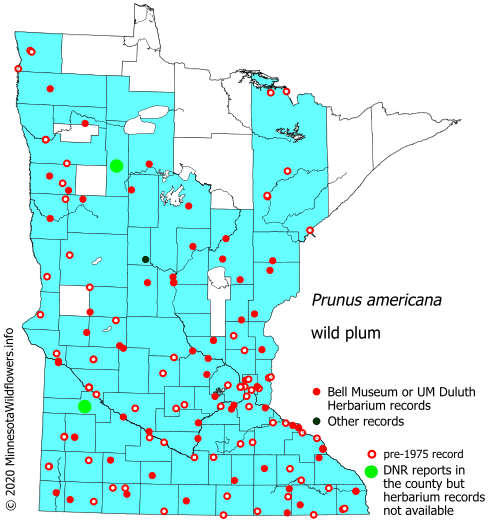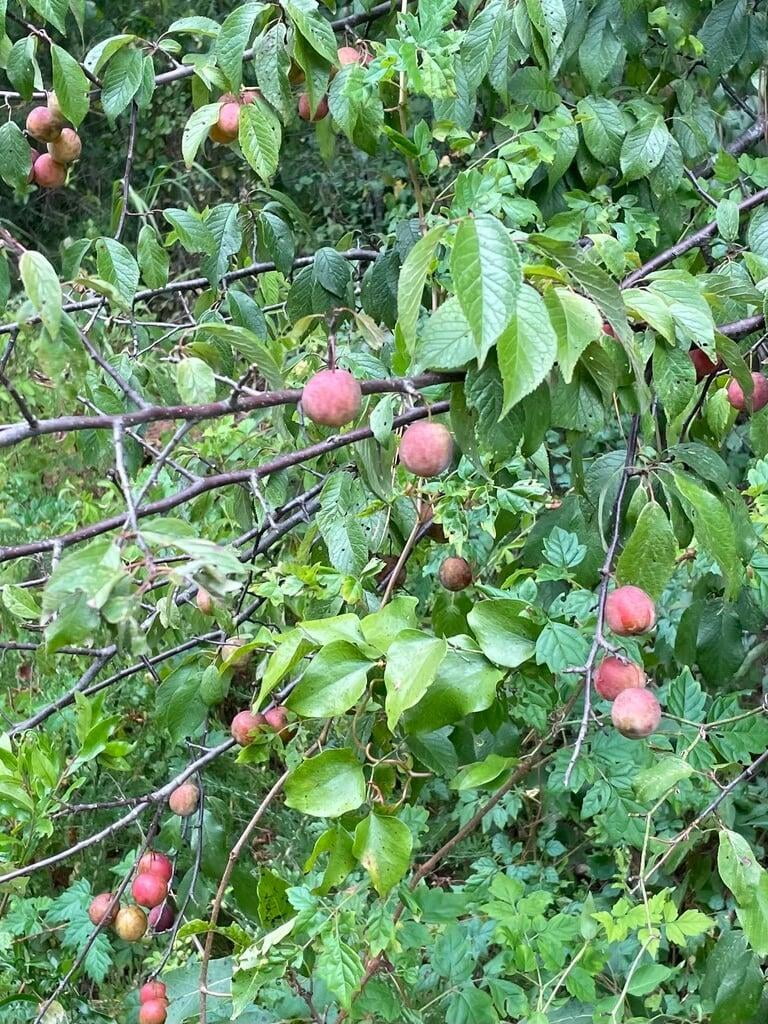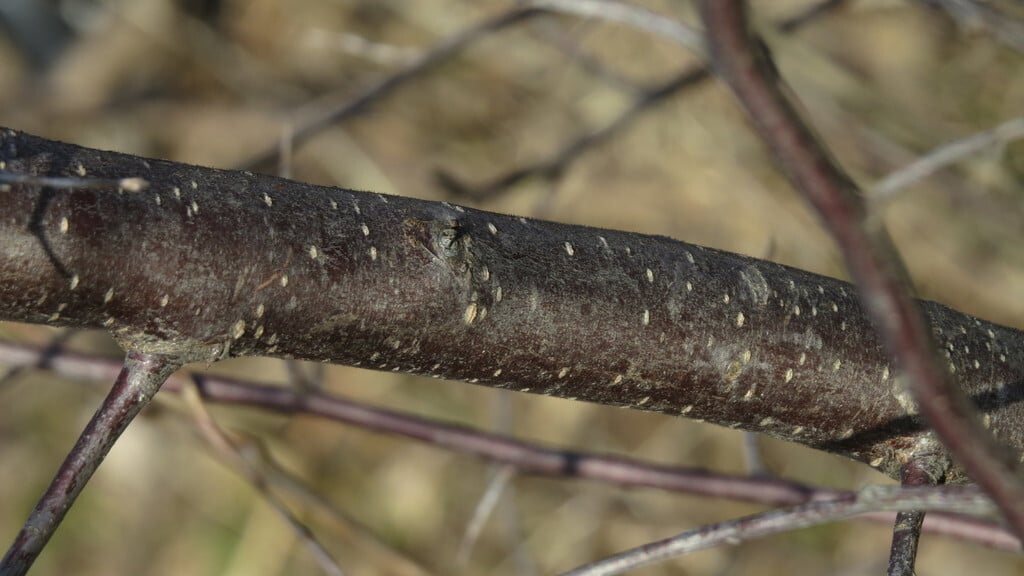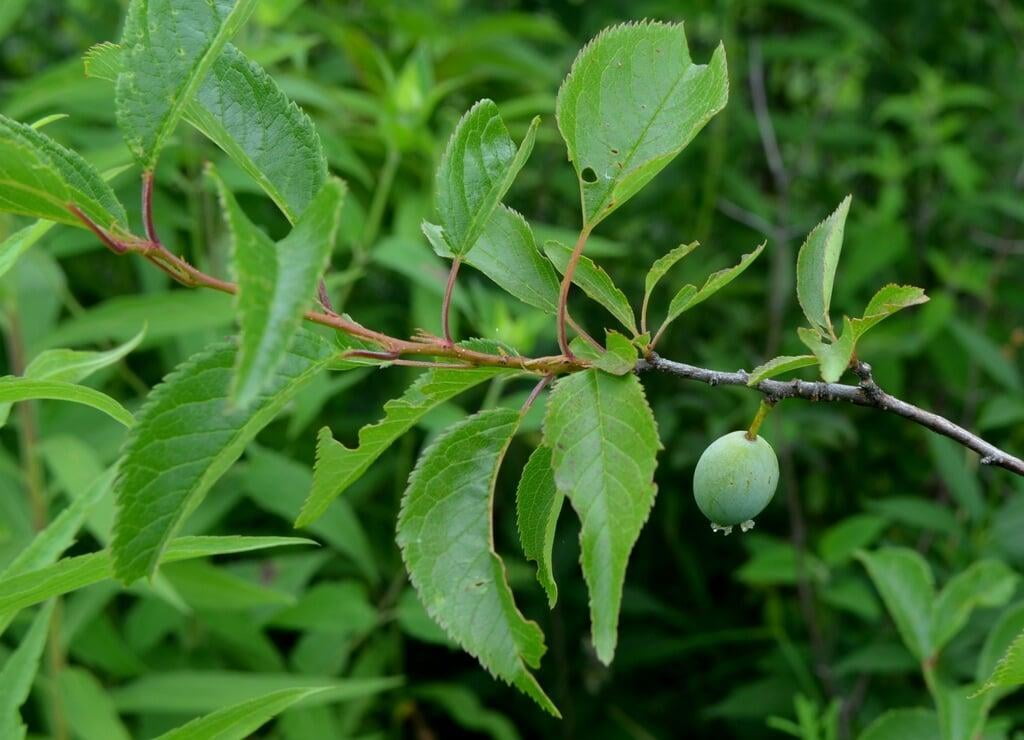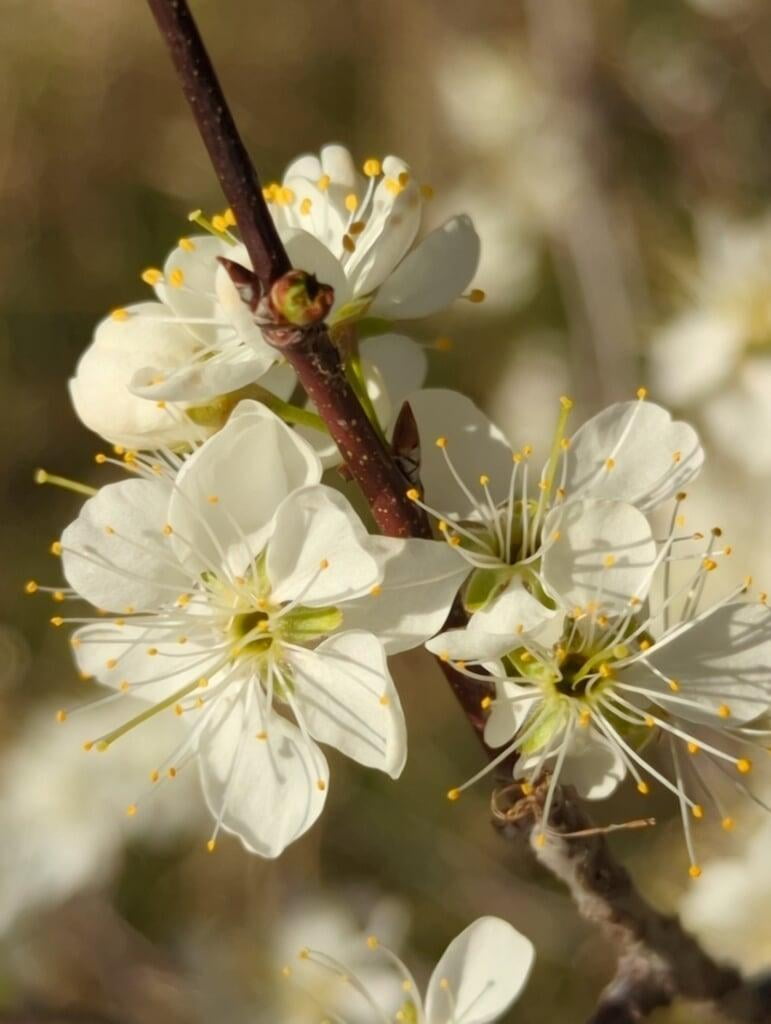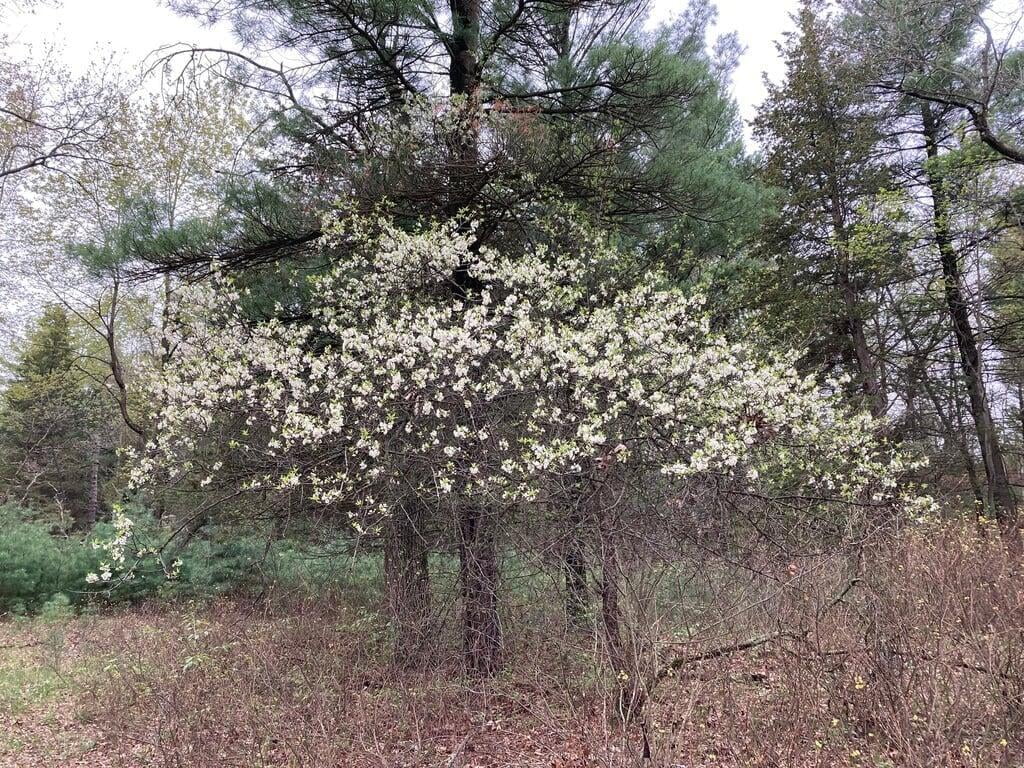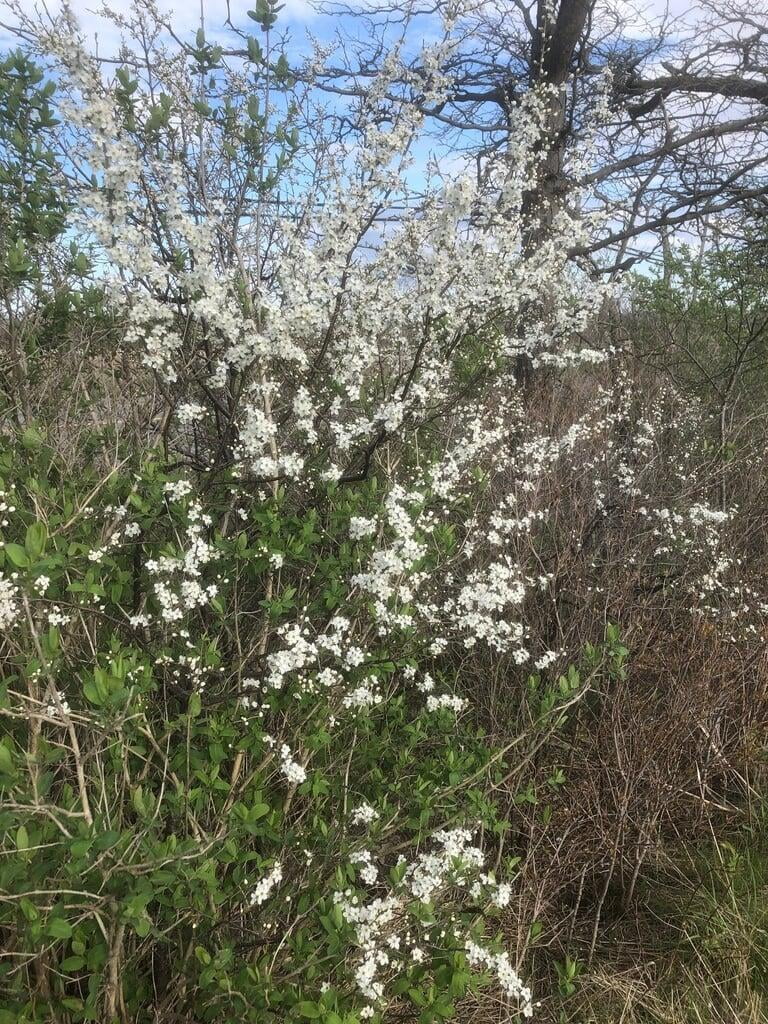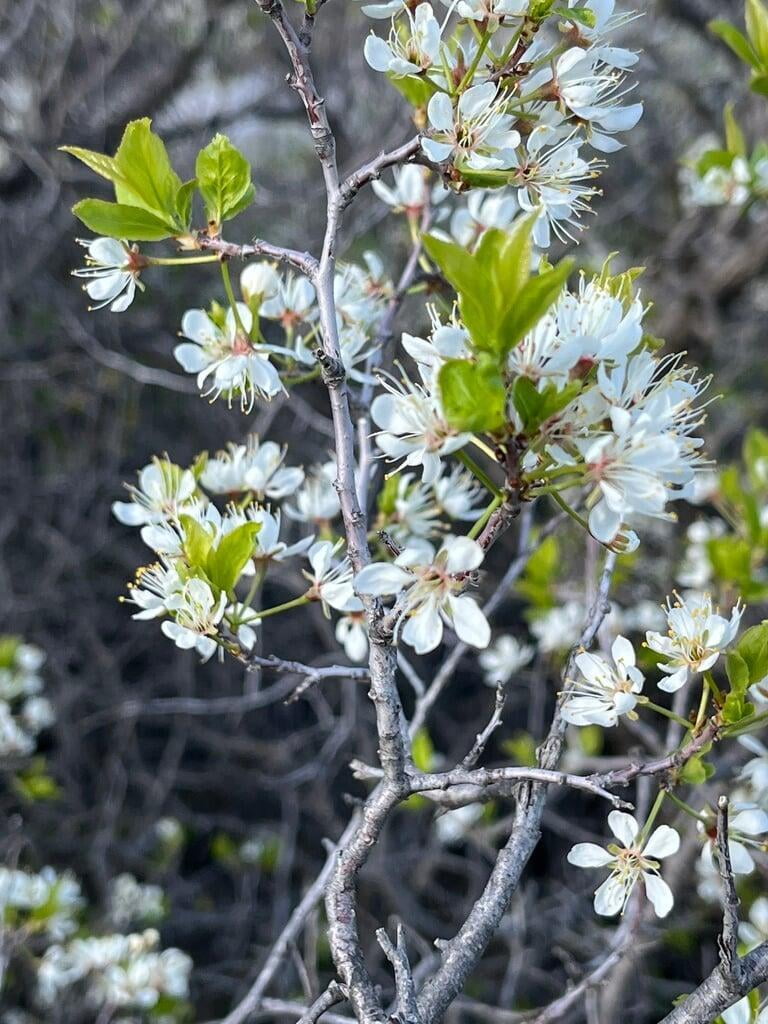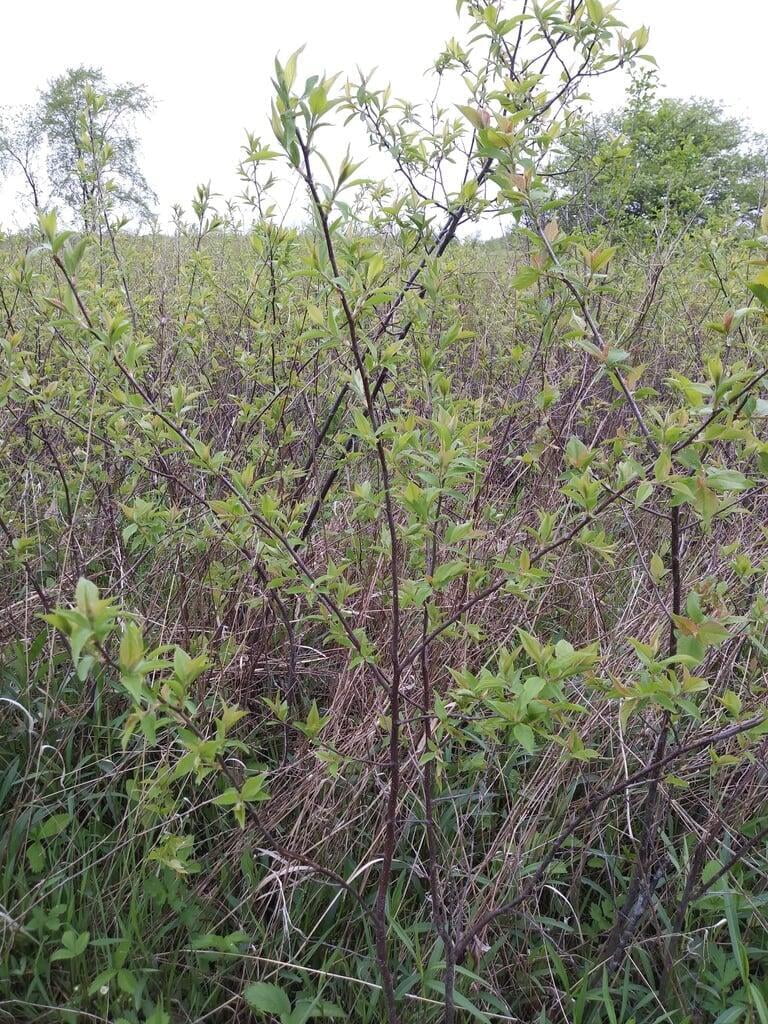Prunus americana
American plum description:
Prunus americana, commonly known as American plum, is a small to medium-sized deciduous tree that belongs to the Rosaceae family. It is native to North America and can be found growing in a wide range of habitats, from dry uplands to wetlands, and from open fields to forest edges. At maturity, the tree typically grows 15 to 25 feet in height and 10 to 15 feet in width, with a rounded to spreading shape. The crown becomes more irregular as the tree ages, and it develops a single or multiple trunks with a diameter of up to 8 inches.
In early spring, the American plum produces a profusion of white to pinkish-white flowers that are 0.75 to 1 inch in diameter. The flowers are typically clustered together in groups of two to five and have a pleasant fragrance. The flowers give way to small, yellow to red plums that are edible and have a sweet and slightly tart taste. The fruit is an important food source for a variety of wildlife, including birds, small mammals, and insects.
The leaves of Prunus americana are simple, alternate, and oval-shaped, with a pointed tip and a serrated margin. They range in size from 1.5 to 3.5 inches long and 1 to 2 inches wide. The leaves are dark green in color and turn yellow in the fall before dropping from the tree. The bark of young trees is smooth and reddish-brown, while mature trees have a darker, rougher bark with a distinctive pattern of vertical fissures. Overall, the American plum is an attractive and hardy tree that is well-suited to a variety of growing conditions.
Native Range:
American plum is native to North America. Its range includes most of the United States, from the Great Plains eastward to the Atlantic coast, and from Canada southward to northern Mexico. Within this range, it can be found growing in a variety of habitats
Standard Plant Information:
Plant Height: 10-25'
Bloom time: May
Preferred Habitat: Does well in part shade to full sun. Often found in fields, prairies, woodlands edges, and along shores.
Planting:
Planting a tree/shrub seedling or small potted tree/shrub properly is important to ensure its healthy growth and development. Here are the steps you can follow to plant a tree:
Choose the right spot: Select a spot with adequate sunlight, water, and soil drainage. Make sure the tree has enough space to grow to its full size without interfering with other plants, structures, or utility lines.
Prepare the soil: Dig a hole that is twice as wide and slightly shallower than the root ball of the seedling. Remove weeds or debris from the area. Loosen the soil around the edges of the hole to help the roots grow more easily.
Plant the seedling: Place the seedling in the hole, making sure the top of the root ball is level with the ground surface. Gently spread out the roots and fill in the hole with soil, tamping it down lightly as you go.
Water the seedling: Water the tree/shrub deeply and thoroughly after planting, making sure the soil is evenly moist. This will help settle the soil around the roots and eliminate any air pockets.
Monitor the growth: Keep an eye on the seedling to make sure it is getting enough water and sunlight, and that it is not being attacked by pests or diseases. Prune any damaged or dead branches as necessary, and provide support if needed.
By following these steps, you can help ensure the healthy growth and development of your newly planted tree/shrub seedling.

